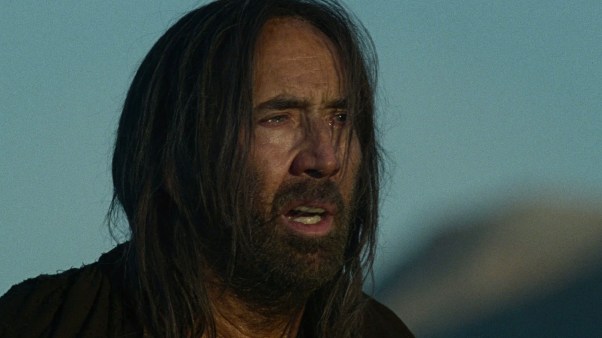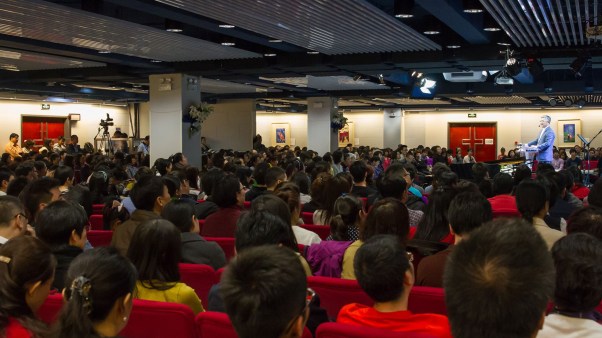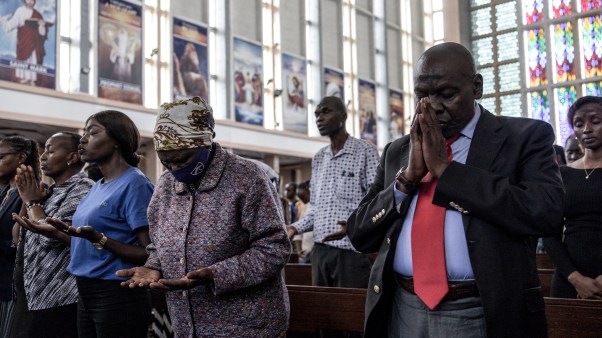After winning the gold medal for the 100m in the 2024 Summer Olympics, Team USA sprinter Noah Lyles did a Kamehameha. Over the summer, when Elon Musk introduced chatbots as a new feature to of Grok—the AI element of his social media platform, X—a sexually provocative, anime-inspired “companion” named Ani proved explosively popular. And earlier this year, the L.A. Lakers did a collab with One Piece, with jumbotron branding and animation shown during a game.
If you don’t know what a Kamehameha is, chalked up Ani’s popularity entirely to lust, or were baffled by a major league sports crossover with a Japanese TV show, I want to propose that you’ve missed one of biggest cultural shifts of the past 30 years: the mainstreaming of anime in the West.
These three examples—and I could give you many more—are not niche or fringe moments for younger generations of Americans. They’re signs that we’ve hit a cultural tipping point decades in the making. For Gen Z and younger millennials, anime has become a cultural influence as significant as (and distinct from) movies, television, video games, and music. And if, like me, you work in high school or college ministry, anime is probably already shaping your students’ hearts and minds whether you realize it or not.
That’s not cause for alarm. In fact, I have good news: You’re already prepared to minister to the anime fans under your care, because anime is not as different from more familiar cultural products as it may seem. But you do need to grasp the scope of this cultural shift to serve these students well.
At its most basic, anime refers to a style of Japanese animation. Even if you know very little about it, you probably know the look: big eyes, spikey hair, lots of action. Think Pokémon or Dragon Ball Z, two of the earlier anime shows to come to the West.
But anime is far more than a genre of film and television. It’s an entire ecosystem of digital media and physical media and physical merchandise and music and clothing and tourism and more. That ecosystem is a $34 billion global industry today and is expected to become a $60 billion industry by 2030.
Unsurprisingly, given that growth, anime’s popularity is no longer limited to stereotypical audiences (chiefly tech-savvy young men). The NFL and MLB are doing anime collaborations alongside the NBA, and the reception has been positive among sports fans and anime fans alike.
The recent Netflix movie K-Pop Demon Hunters blends anime visual inspiration with American animation and Korean pop music, and it became a global smash hit. Art-house film distributor A24 is bringing China’s anime-influenced animated film Ne-Zha 2 to theaters in the States; it’s the highest-grossing animated movie of all time. And Disney just announced its first official anime, a series based on a lucrative mobile game that puts Disney villains in a Harry Potter-style setting.
For most younger Americans, none of this is news. I was born in 1991, and for many people around my age, the question worth asking is not whether we watched anime as kids but whether we kept watching it into adulthood. And my experience as a youth pastor suggests that for those in Gen Z and younger (anyone born after 1996), the notion of dropping anime as an adult is almost nonsensical.
For these students, anime is simply a normal part of life, a mainstay of pop culture. It’s reached water-is-wet levels of cultural saturation, much like Friends, Seinfeld, and the original Star Wars trilogy are for Gen X, or The Office for older millennials. As that younger cohort gains economic power, the anime industry is shifting to satisfy their nostalgia and take advantage of their disposable income in a trend similar to that of Disney adults. There’s big money in anime merchandising, and the market is only growing.
Even as a lifelong anime viewer, I struggle to wrap my mind around just how pervasive anime has become. That baseline familiarity has served me well in youth ministry, but thankfully, you don’t need to be an anime fan to understand why younger Christians care about anime and how it’s influencing their lives. Here are three ways to begin.
First, add anime to your list of cultural buckets. When we’re trying to get to know someone, we often work through large cultural buckets—books, movies, TV, sports, video games, and so on—to learn what they like. If you’re talking to someone under 30, add anime to that list. The question will likely elicit a strong opinion even from students who aren’t interested, and once you add this category to your standard introductory small talk, you’ll more organically notice how anime’s import has grown.
Next, ask good questions with genuine interest. If a student is wearing a T-shirt with anime characters on it or makes a reference to an anime as you’re talking (and that’s likely the allusion if you can’t think of what else it could be), ask them about it. Kids love talking about things they enjoy, and they want adults to notice them and their interests. Who, what, and why questions are great starting points: What show is that? Who is that on your phone case? Why do you like it?
If you didn’t grow up with anime, I realize the style may look childish or unserious: characters with colorful hair, loud and exaggerated displays of strength or emotion, giant robots and other sci-fi or fantasy designs. But it would be a gross mistake to assume that anime is shallow in story and content. On the contrary, a major part of its appeal is the complexity of its narratives, the freshness of its themes, and the sincerity of its storytelling. While much of Western media has declined into endless sequels and soulless reboots, anime is still offering new (or, at least, new to us) ideas and characters.
Moreover, many of its stories are positive and hopeful, appealing to both boys and girls, with clear morality structures that do not confuse good and evil. Where Western media often treats boys and men as dangers to avoid or problems to be solved—Richard Reeves’s Of Boys and Men is eye-opening here—many animes have aspirational male heroes and messages about courage, dedication, sacrifice, persistence, and duty. Anime may have a surface-level weirdness for older Western audiences, but look deeper and you’ll frequently find remarkably virtue-driven storytelling.
Of course, like any media, anime varies widely in quality. Some of it is as shallow as it appears. Some of it is worse than shallow, particularly with animes that oversexualize female characters. The portrayal of women in anime is too large a topic to cover in detail here, but suffice to say the conversation around it resembles similar debates around the portrayal of women in Western media.
If I run into sexual content in the course of asking about a student’s anime interests, my approach is as with other media: I reiterate that God has called us to holiness, to crucify our flesh with its sinful desires in the power of the Spirit, including our lustful fantasies (1 Thess. 4:3). “And if your right hand causes you to stumble, cut it off and throw it away. It is better for you to lose one part of your body than for your whole body to go into hell” (Matt. 5:30).
At the same time—and again, just as with Western media—each anime should be evaluated on an individual basis, and ministry leaders should recognize that students may express enthusiasm for an anime in spite of its objectionable content rather than because of it. Taking a scorched-earth stance to all anime because some of it is grossly sexualized will make good questions and genuine interest impossible.
Third, connect the deeper appeals and aspirations of anime to Christ through the Word. Anyone with long experience in youth ministry knows that pop culture can be a meeting point for deep discipleship. Being a good conversation partner about the stories our students love and why they love them is a ministry skill. In this sense, anime is no different than any other story, and you can submit the questions, ideas, and themes in these stories to examination by the Word.
For example, consider the anime show Death Note, which supplied the character design inspiration for Musk’s chatbot Ani. The main character is a high school student named Light Yagami who discovers a supernatural notebook capable of killing anyone whose name he writes inside. Driven by a strong sense of justice, Light begins using the book to kill scores of people he believes worthy of judgment: politicians, criminals, corrupt businessmen, and more. The wave of unexplainable deaths triggers a panic and a race to find their source, even as many come to think of the unknown killer as a prophetic figure delivering the world from evil.
Death Note is dark and disturbing story. But it also seriously grapples with questions of law, justice, and morality. Its Dostoevsky-esque storytelling has made Death Note one of the most commercially and critically acclaimed animes—and, potentially, an entry point to fruitful conversations with young fans about what it means to be righteous, what to think when the wicked escape justice, and why we long to live in a world where the guilty are punished and the innocent protected. You may have visceral distaste for this media style, but if you’re willing to dig into why a student loves an anime like Death Note, God can use that perseverance for good.
Anime is part of internet culture, and internet culture increasingly is our culture. The church needs mature Christians to be willing to navigate this huge new bucket of media consumption. But even as culture changes, the words of Ecclesiastes are true: There is nothing new under the sun (1:9–10). The way we tell stories may differ, but the stories that captivate our hearts always speak to our deepest need for God.
You may never “get” anime, and that’s okay. But with the patience and courage to learn more about it, obstacles can become opportunities. For the sake of discipling future generations of Christians, we should take every opportunity we can get.
Austin Gravley is the director of youth of Redeemer Christian Church in Amarillo, Texas. He is formerly the social media manager of The Gospel Coalition and executive producer of Mending Division Academy for American Values Coalition. Find Austin through on the What Would Jesus Tech? podcast and his Substack.






















